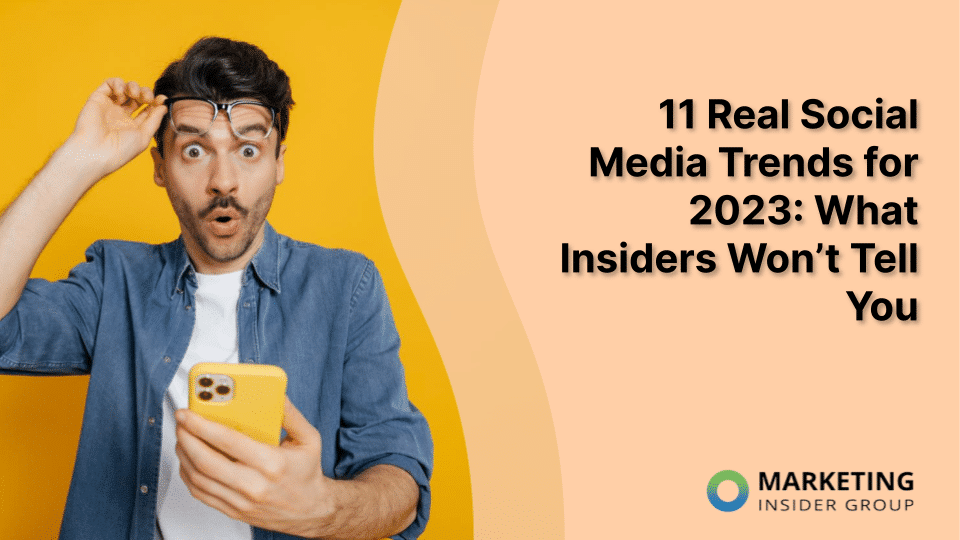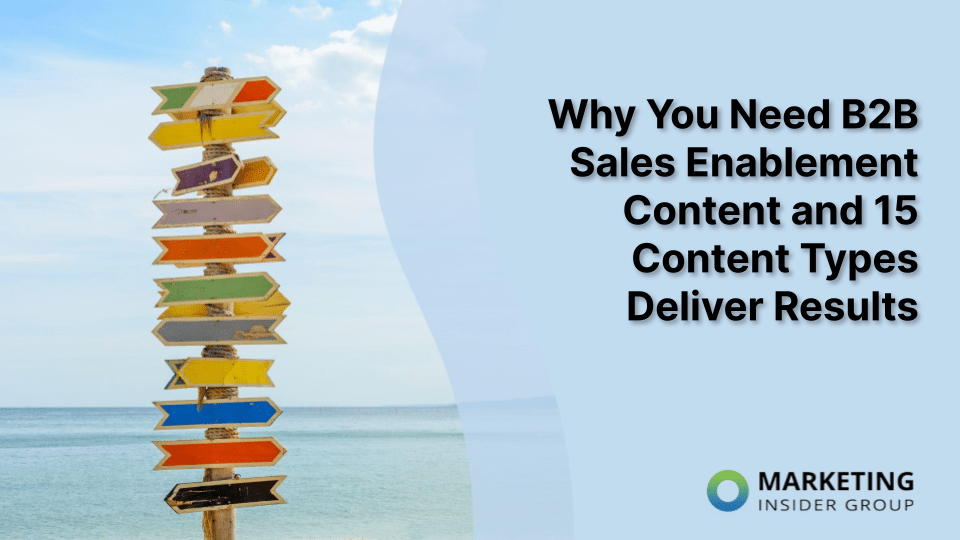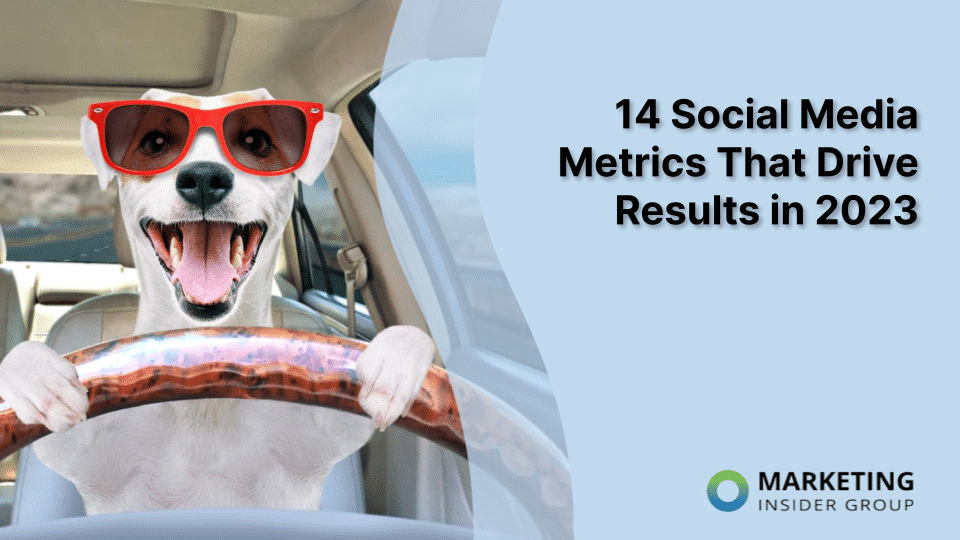
14 Social Media Metrics That Drive Results in 2023
Ever feel like your social media metrics are whispering secrets to you? Like they’re trying to tell a story about your audience, your brand, and your online performance? Well, you’re not far off.
Social media metrics are constantly gathering intel, ready to report back with crucial insights about how much your audience is digging your content, how loyal they are to your brand, and much more.
Each metric holds a piece of the puzzle, showing you what’s working, what’s not, and where there’s room for improvement. It’s your job to put the puzzle pieces together.
That’s why today, we’re sharing 14 key social media metrics and their meaning to help you decode the hidden truths that lie in your data.
1. Average Engagement Rate (AER)
The Average Engagement Rate (AER) helps businesses understand how well their content is resonating with their audience. It’s a measure of the level of engagement that a piece of content sees from its audience.
Simply put, AER tells you how much your audience is interacting with your content. This could be in the form of:
- Likes
- Shares
- Comments
- Any other form of engagement that a social media platform allows
AER will give you a clear picture of how your content is performing. If it’s high, it means your audience finds value in your content. On the other hand, a low AER could indicate that your content isn’t hitting the mark and needs some adjustments.
2. Conversion Rate
Think of your Conversion Rate as the finish line in a race. It’s the point where your audience does what you want them to do. This could be anything from signing up for a newsletter, downloading a whitepaper, or making a purchase.
For B2B companies, the Conversion Rate is key. It’s not just about getting likes and shares, it’s about turning those social media users into leads or customers. It’s the metric that shows if your social media efforts are contributing to your bottom line.
To measure your Conversion Rate, you need to know two things:
- The number of people who did what you wanted them to do (conversions)
- The total number of people who had the opportunity to do so
So, if 100 people visited your landing page and 10 of them downloaded your whitepaper, your Conversion Rate would be (10/100)*100 = 10%.

Improving your Conversion Rate is all about making it easy and attractive for your audience to take action. This could mean:
- Creating a killer call-to-action
- Making your landing page more user-friendly
- Offering something so valuable that your audience can’t resist
For B2B companies, it could also mean understanding your audience’s pain points and showing how your product or service can solve them.
3. Brand Awareness
You already know how important Brand Awareness is, especially for B2B companies. It’s the first step in the customer journey. Before people can buy from you, they need to know who you are. And not just know you, but like you and trust you too.
A high level of Brand Awareness means more people are likely to think of your brand when they need the products or services you offer, but measuring Brand Awareness can be a bit tricky. It’s not as straightforward as counting likes or shares. It often involves surveys and interviews to find out how many people know your brand and what they think about it.
You can also look at metrics like:
- Website traffic
- Social media followers
- The reach of your posts
Improving Brand Awareness is all about getting your name out there and making a good impression. This could mean:
- Creating engaging content
- Being active on social media
- Partnering with other brands to reach a wider audience
- Attending industry events
- Publishing thought leadership articles
- Offering webinars or workshops
The goal is to show your expertise and build trust with your audience.
4. Cost-Per-Click
Cost-Per-Click (CPC) helps you keep track of your ad spend. You want to make sure your ads are cost-effective and deliver a good return on investment.
Measuring CPC is as easy as pie. You just divide the total cost of your clicks by the number of clicks. So, if you spent $100 on an ad and got 200 clicks, your CPC would be $100/200 = $0.50. That means you’re paying 50 cents for each visitor to your site from that ad.
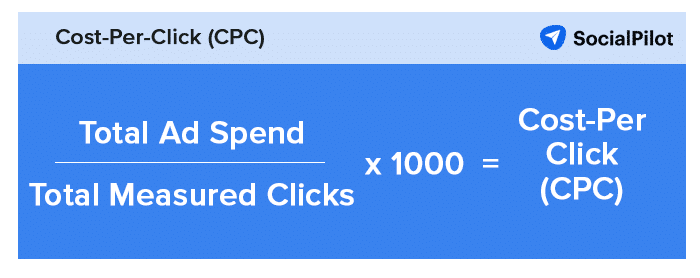
Image Source: Social Pilot
Improving your CPC is all about getting more clicks for less money. This could mean tweaking your ad copy to make it more enticing, targeting your ads more effectively, or testing different types of ads to see what works best.
For B2B companies, it could also mean focusing on long-tail keywords that are less competitive but highly relevant to your audience. These can often deliver lower CPCs and higher quality traffic.
5. Impressions
Impressions are like the first hello in a conversation. They’re the starting point of any interaction on social media. If your post doesn’t make an impression, it’s like it’s invisible.
Measuring impressions is pretty straightforward. Every time your post appears on someone’s screen, that’s counted as one impression. So, if your post shows up on 500 screens, you’ve got 500 impressions. But remember, impressions don’t tell you if someone interacted with your post or even if they really looked at it. They just tell you that your post was there, waving hello.
Boosting impressions is all about increasing your visibility. You want your posts to show up on as many screens as possible. This could mean posting at times when your audience is most active or using relevant hashtags to get your content in front of more eyes.
For B2B companies, it could also mean creating content that’s super relevant to your industry. The more relevant your content, the more likely it is to show up in feeds and searches.
6. Click-through Rate
Click-through Rate (CTR) tells us if our content is hitting the mark. If people are clicking, it means they’re interested and want to know more. It’s like a thumbs up from your audience.
For B2B companies, a good CTR is a sign that your message is resonating with other businesses. It means you’re speaking their language and offering something they find valuable.
Measuring CTR is simple. Divide the number of clicks your content gets by the number of times it was seen (impressions). So, if your ad was seen 1000 times and got 50 clicks, your CTR would be (50/1000)*100 = 5%.

Image Source: Wordstream
Improving your CTR is all about making your content more click-worthy. This could mean writing more engaging headlines, using eye-catching images, or making a compelling offer. It could also mean understanding what your business audience cares about and tailoring your message to their needs and interests.
7. Virality Rate
Your virality Rate lets you know how much your content is resonating with your audience. If people are sharing your content, it means they find it valuable and think others will too. And, a high Virality Rate can help spread the word about your brand, products, or services to a wider audience.
Measuring Virality Rate is pretty straightforward. You just divide the number of shares your content gets by the number of views, and then multiply by 100 to get a percentage. So, if your post gets 100 views and 10 shares, your Virality Rate is (10/100)*100 = 10%.

Image Source: AdEspresso
To improve your Virality Rate, you need to create share-worthy content. Focus on creating content that’s entertaining, informative, or inspiring. It should also help your audience solve a problem, improve their skills, or understand a complex issue. The more value you provide, the more likely your audience is to share your content.
8. Cost-Per-Mile
Cost-Per-Mile, or CPM, refers to how much you’re paying to reach 1000 people with your ad. It’s like buying a billboard on a busy highway and counting the number of cars that pass by. It’s important because it helps you understand the cost of getting your message to your audience.
To measure CPM, divide the total cost of your ad campaign by the number of impressions (the number of times your ad was shown), and then multiply by 1000. So, if you spent $100 on an ad campaign that got 10,000 impressions, your CPM would be ($100/10,000)*1000 = $10.
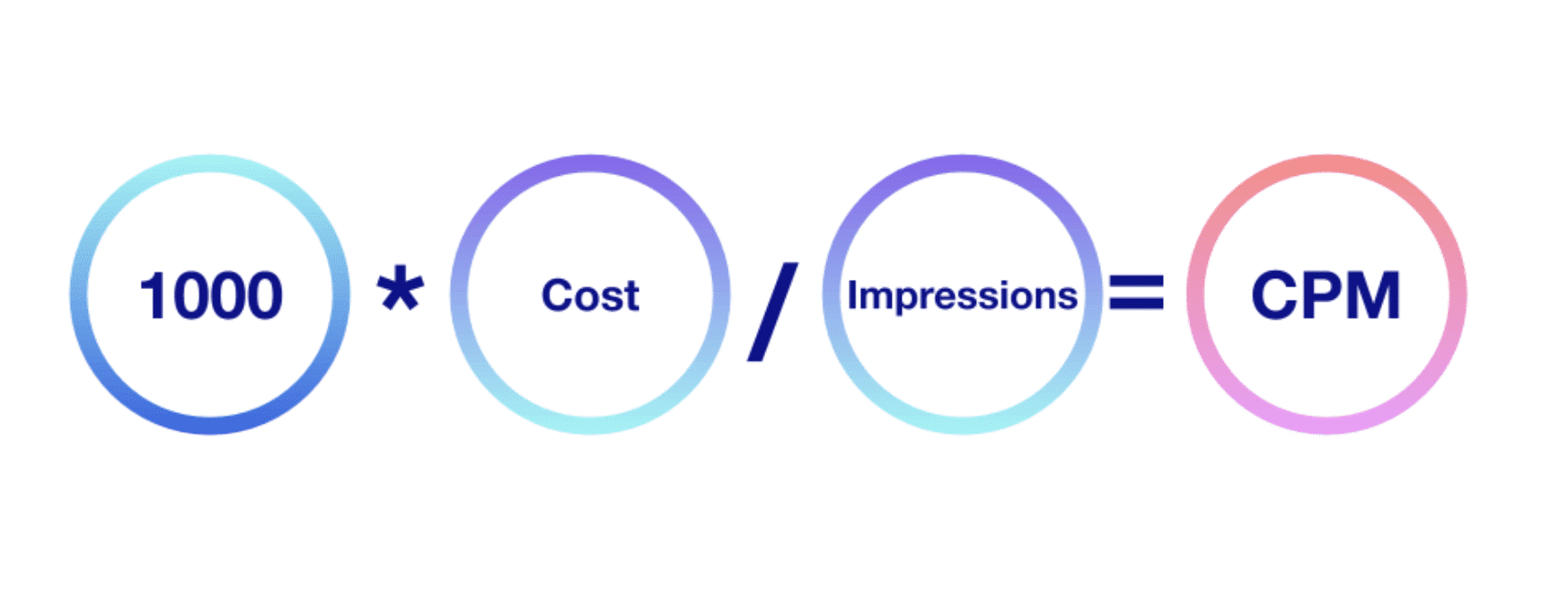
Image Source: ironSource
Improving your CPM is all about getting more impressions for less money. This could mean:
- Optimizing your ad to make it more appealing
- Targeting your ad to a more specific audience
- Testing different ad placements to see where you get the best results
- Creating high quality content that attracts and engages your target audience
The better your content, the more likely it is to get seen and shared, which can help lower your CPM.
9. Bounce Rate
Bounce Rate lets you know how engaging (or not) your website is. If people are bouncing off quickly, it might mean they didn’t find what they were looking for, or maybe your website wasn’t as user-friendly as it could be.
A high Bounce Rate could mean you’re missing out on potential leads or customers. You want people to stick around, learn more about your business, and hopefully take the next step, like making a purchase or contacting you for more info.
Your Bounce Rate is the percentage of visitors who leave your website after viewing just one page. So, if 100 people visit your website and 50 of them leave without clicking on anything else, your Bounce Rate is 50%.
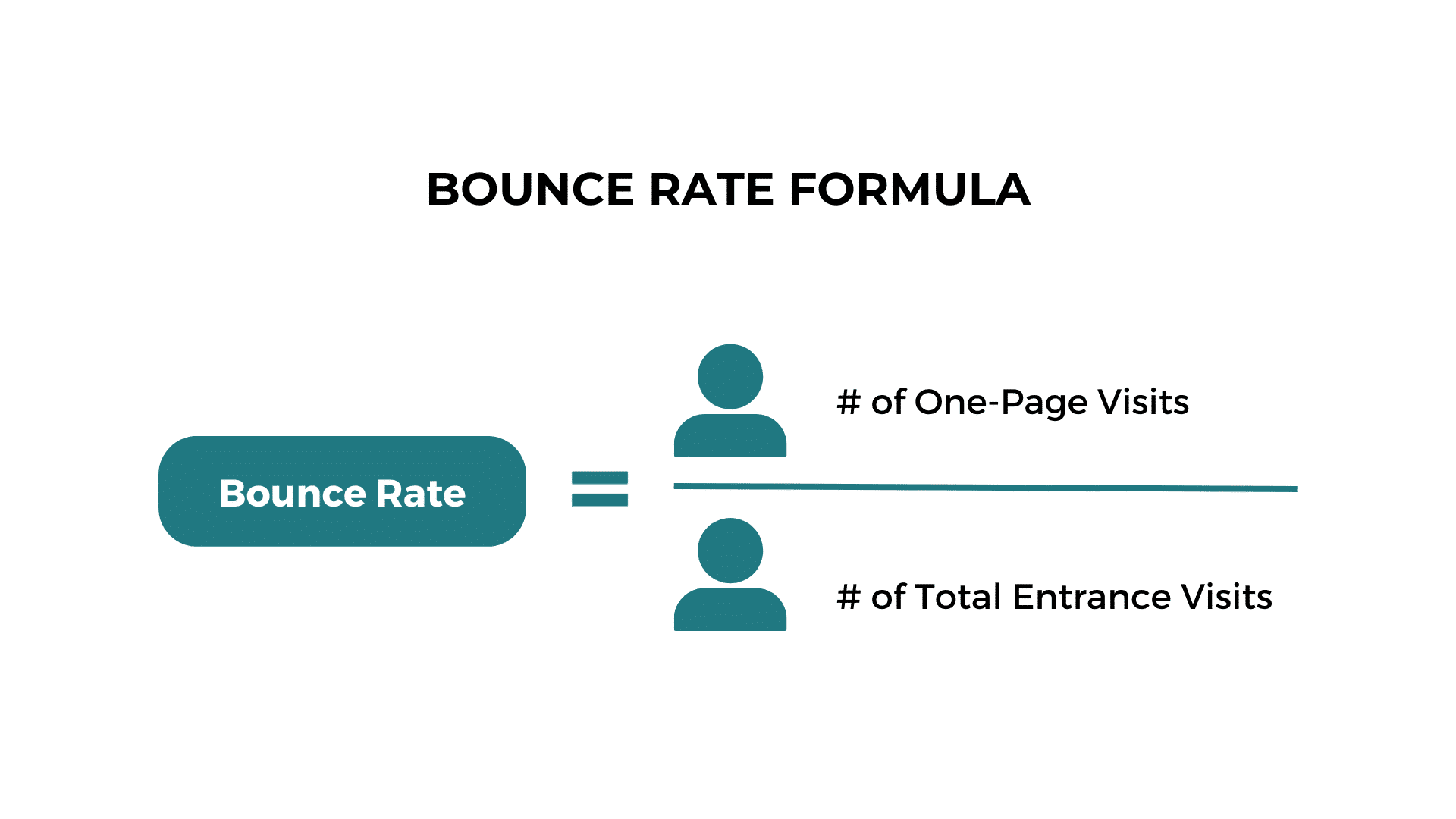
Image Source: AB Tasty
To improve your Bounce Rate, make your website more engaging and user-friendly by:
- Improving your website design
- Making your content more interesting
- Ensuring your website loads quickly
For B2B companies, it could also mean making sure your website clearly communicates what you do and the value you offer. You want to grab your visitors’ attention and give them a reason to stick around.
10. Social Share of Voice (SSOV)
Social Share of Voice (SSOV) tells you how much buzz your brand is creating. For B2B companies, a high SOV means you’re leading the conversation in the industry. You’re the thought leader, the trendsetter, the one everyone else is listening to.
To measure SSOV, you need to know how many social media mentions your brand has compared to your competitors. So, if your brand has 100 mentions and your competitors have 900 combined, your SSOV would be (100/1000)*100 = 10%.

Image Source: Augurian
Improving your SSOV means getting more people to talk about your brand with more engaging content, the launch of exciting new products, or exceptional customer service.
If you’re a B2B company, share valuable insights, participate in industry discussions, or partner with influencers in your field.
11. Follower Count and Growth
Follower Count and Growth is exactly what it sounds like–it gives you an idea of the size of your audience. A large and growing follower count means you have a wide audience for your message and more potential customers interested in what you have to say.
To measure your Follower Count and Growth, simply check your social media profiles. Your follower count is the number of people following your account, and your growth rate is how fast that number is increasing. If you start the month with 100 followers and end with 150, your growth rate for that month is (150-100)/100*100 = 50%.
To improve your Follower Count and Growth, you need to attract and retain new followers by:
- Posting engaging content
- Interacting with your followers
- Running social media campaigns
- Sharing valuable industry insights
- Showcasing your products or services
- Highlight customer testimonials
12. Amplification Rate
Amplification Rate is the echo of your social media voice. It tells you how much your audience is helping to spread your message.
For B2B companies, a high Amplification Rate means your message is being spread far and wide by your audience. It means your content is resonating with people and they’re helping to amplify your voice.
To measure your Amplification Rate, divide the number of shares your content gets by the number of overall followers (or impressions), and then multiply by 100 to get a percentage. So, if your post gets 50 shares and you have 1000 followers, your Amplification Rate is (50/1000)*100 = 5%.
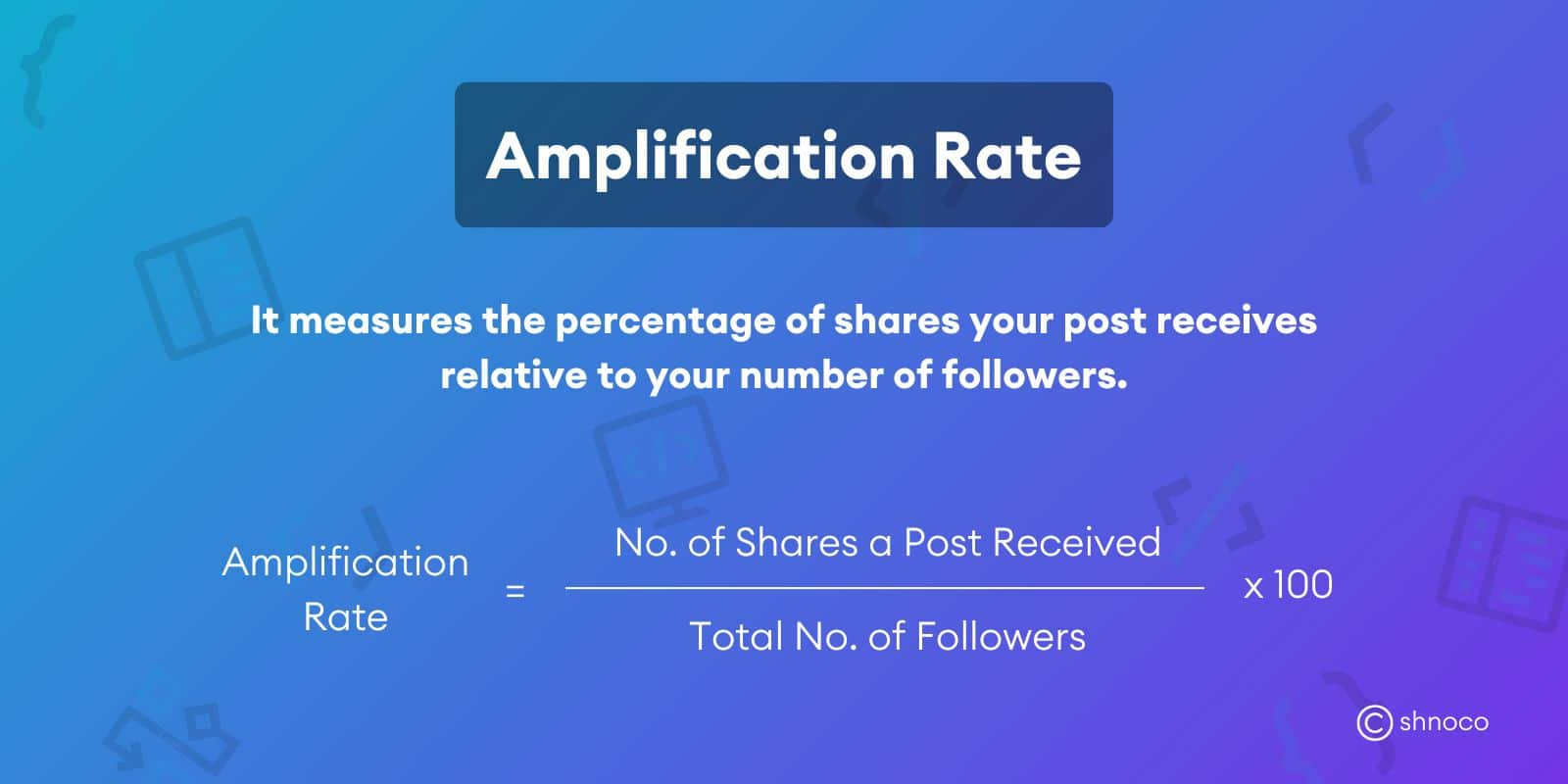
Image Source: Shnoco
Improving your Amplification Rate is all about creating share-worthy content. For B2B companies, it could also mean understanding what your audience wants to see and tailoring your content accordingly.
13. Customer Satisfaction Score (CSAT)
Your Customer Satisfaction Score (CSAT) gives you a direct line to how your customers are feeling. A high CSAT means you’re doing a great job meeting your customers’ needs.
Measuring CSAT is as easy as asking your customers how satisfied they are. This is usually done through a survey where customers rate their satisfaction on a scale, like 1 to 5 or 1 to 10.
So, if you have 100 customers and their ratings add up to 450 on a 1-5 scale, your CSAT would be (450/ (100*5))*100 = 90%.
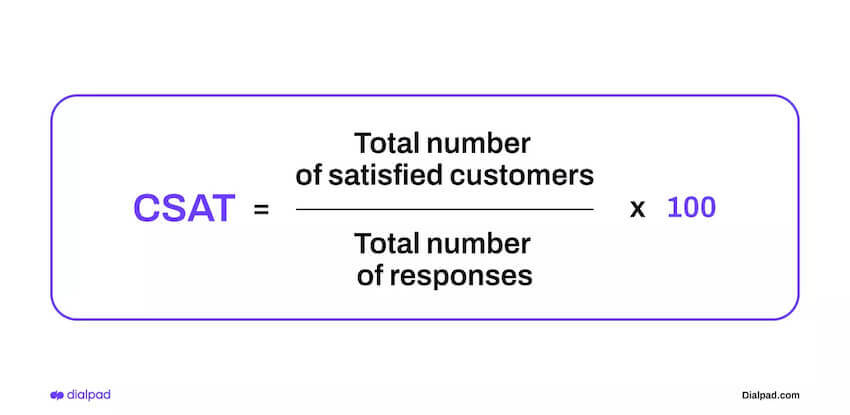
Image Source: Dialpad
Improving your CSAT is all about making your customers happier. This could mean:
- Improving your product
- Offering better customer service
- Listening to your customers and taking their feedback to heart
The most important thing is to understand your customers’ needs and find ways to help them succeed.
14. Net Promoter Score (NPS)
Net Promoter Score, or NPS, is the word-of-mouth reputation of your business. It’s how likely your customers are to recommend you to others, and it’s important because it gives you a sense of your customers’ loyalty.
To measure your NPS, ask your customers one question: “On a scale of 0-10, how likely are you to recommend our company to a friend or colleague?”
Then, subtract the percentage of detractors (those who respond with a score of 6 or lower) from the percentage of promoters (those who respond with a score of 9 or 10). So, if 70% of respondents are promoters and 10% are detractors, your NPS is 70-10 = 60.
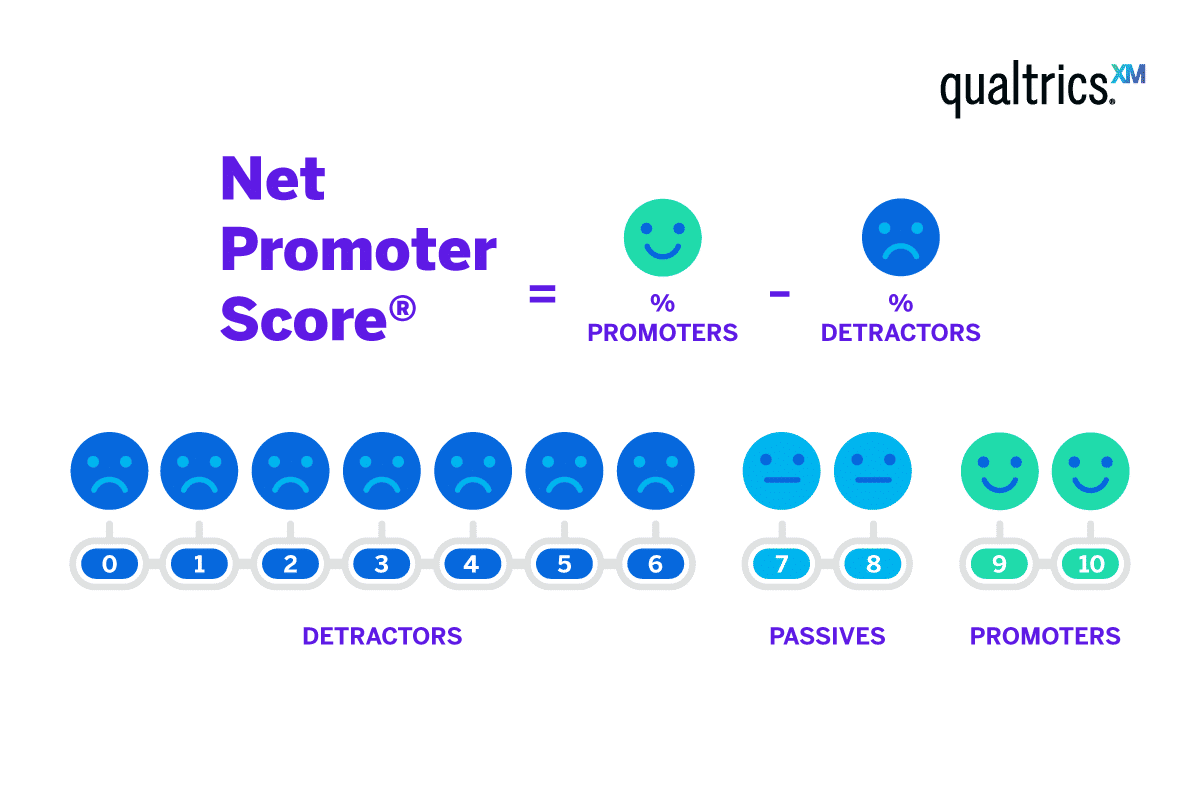
Image Source: Qualtrics
The best thing you can do to improve your NPS is to go the extra mile to make your customers feel valued. Understand your audience’s challenges, help them overcome them, and offer exceptional customer service along the way.
Maximize Your Metrics Today with Marketing Insider Group
Keeping track of the right social media metrics can make all the difference. From understanding how well your content resonates with your audience to knowing how likely your customers are to recommend you to others, each metric offers valuable insights that can help you refine your strategy and achieve your goals.
It’s not just about collecting data, but rather understanding what that data is telling you. Are your customers happy? Are your posts reaching the right people? Are your ads cost-effective? The answers to these questions and more lie in your social media metrics.
Ready to maximize your results with social media metrics? Get started today by checking out our weekly blog content service, or schedule a free consultation now to learn more!

